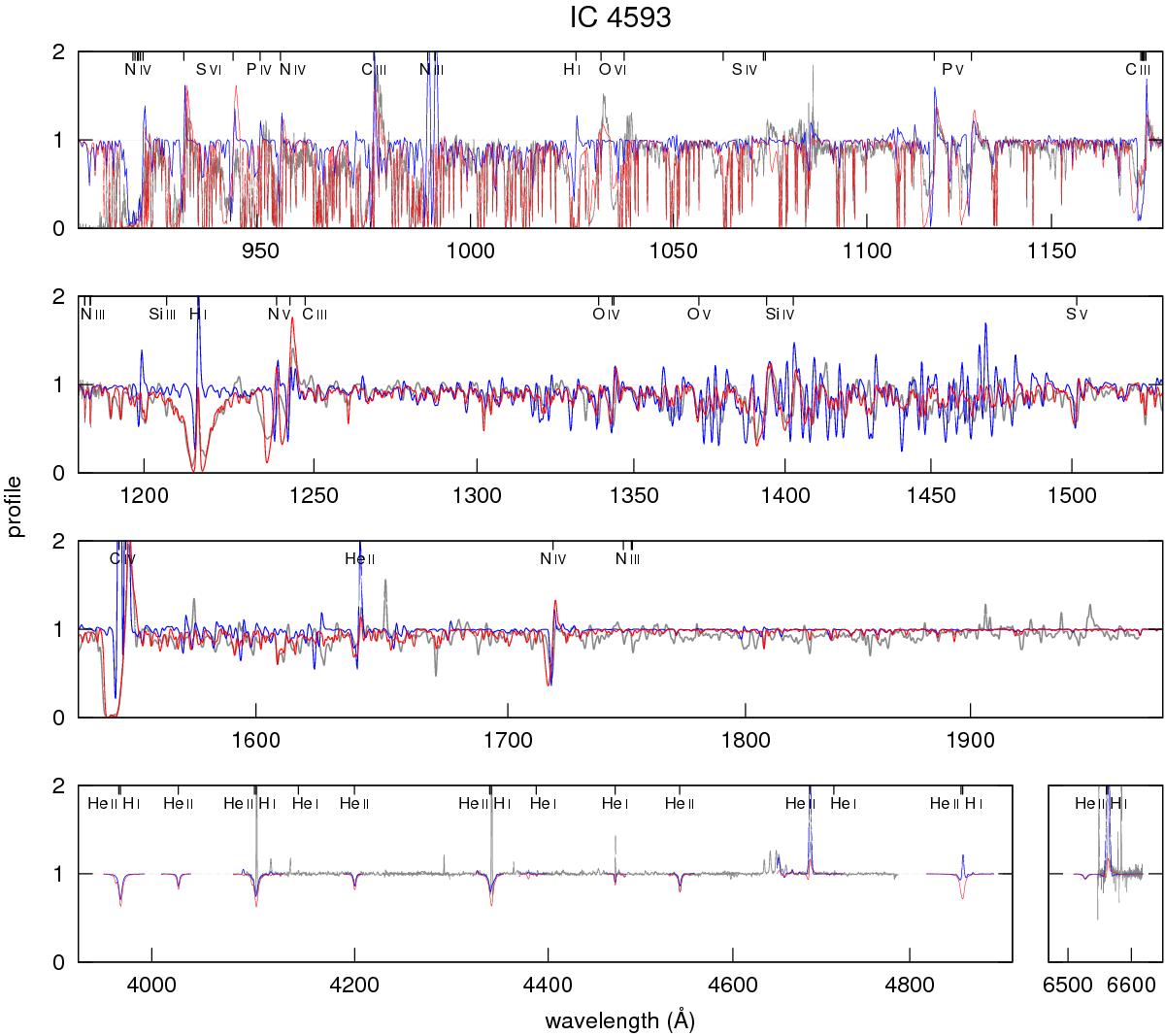Fig. 1

Observed UV and optical spectrum of IC 4593 (gray) compared to synthetic spectra computed from atmospheric models with consistently calculated winds, based on the stellar parameter sets of Kudritzki et al. 2006 (K06c; blue) and Pauldrach et al. 2004 (P04; red). The K06c spectrum shows large differences to the observed spectrum, thus arguing against this parameter set, whereas the P04 spectrum is in generally much better agreement with the observed spectrum. (For cosmetic reasons, and to identify and distinguish the interstellar lines from the stellar features, the most important interstellar lines (primarily absorption by molecular and atomic hydrogen) have also been included in the latter model12.) The plot also illustrates the well-known fact that the UV spectrum of O stars contains much more, and stronger, spectral lines than the optical. Given the furthermore known sensitivity of the optical emission lines to physical and modeling uncertainties such as clumping (to which the UV spectrum is much more robust), this emphasizes that the UV carries much more diagnostic weight than the optical.
Current usage metrics show cumulative count of Article Views (full-text article views including HTML views, PDF and ePub downloads, according to the available data) and Abstracts Views on Vision4Press platform.
Data correspond to usage on the plateform after 2015. The current usage metrics is available 48-96 hours after online publication and is updated daily on week days.
Initial download of the metrics may take a while.


